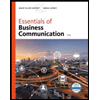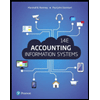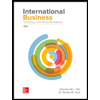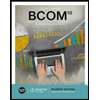LOGISTIC GROUP ASSIGNMENT
.docx
keyboard_arrow_up
School
Centennial College *
*We aren’t endorsed by this school
Course
711
Subject
Business
Date
May 18, 2024
Type
docx
Pages
11
Uploaded by MasterValor13348 on coursehero.com
Group Assignment- Group 1
Global Logistics
Name:
Ashwini Sharma – 301379960
Preksha Patel - 301426406
Saumya Shah – 301416507
Kartik Sharma – 301327499
7/04/2024
Professor Name: Mauro Spies
Answer 1: Calculate Chargeable weight:
➔
4.5 cubic meters of materials equal to 274607 cubic inches
➔
To convert cubic inches to Kgs, divide cubic inches by 366 (as per the US air cargo volume conversion)
➔
therefore 274607 cubic inches equals 274607 / 366 = 750.30 kgs.
➔
Since the actual weight of the consignment is 1200 kgs. Which is more than the chargeable weight, we shall consider 1200 kgs for freight calculation.
➔
The weight of the consignment is 1.2 metric tons which is 1200 kgs.
➔
Given; US $ 1 = CAN $ 1.30
➔
EURO 1 = CAN $ 1.40
➔
Conversion of EURO and Canadian dollar to the US dollar and pound to Kg.
➔
EURO 1 equals US $ 1.21.
➔
CAN $ 1.41 equals to US $ 1.08
➔
One hundred pounds equals 45.36 kgs.
Freight Calculation:
Alternative 1
Montreal - JFK by express truck
CAN $ 15.00 / 100 lb. = US $ 11.62 / 45.36 kgs.
(A) For 1200 kgs consignment (1200 / 45.36) * US $ 11.62 = $ 307.41
JFK - RUH; +500 - US $ 11.02 /kg
(B) for 1200 kgs. consignment 1200 * US $ 11.02 = $ 13224
Total Freight charges (A + B) $ 307.41 + $ 13224 = $ 13531.41
Alternative 2
YUL -CDG; +300 Kgs - CAN $ 3.36/ Kg = US $ 2.60 /Kg.
(C) For 1200 kgs of consignment = 1200 kgs * US $ 2.60 /kg. = $ 3120
CDG - CAI; + 500 kgs. - EURO 6.93 / Kg. = US $ 8.39 /kg.
(D) For 1200 kgs of consignment = 1200 kgs * US $ 8.39/kg = $ 10068
Total freight charges (C + D) ($ 3120 + $ 10068) = $ 13188
.
ALTERNATIVE 1
●
Montreal to JFK $ 307.41
●
JFK to RUH $ 13224.00
●
Total Freight $ 13531.41
ALTERNATIVE 2
●
YUL to CDG $ 3120.00
●
CDG to CAI $ 10068.00
●
Total Freight $ 13188.00
Answer 2:
Evaluating the risks associated with each factor in the context of the two available transportation
options is the process of conducting a CREEEPSS risk analysis (which considers Cultural, Regulatory, Economic, Environmental, Ethical, Political, Social, and Security factors) for the delivery of emergency pharmaceuticals to Yemen. These variables may have the following effects on the choice:
1. Cultural:
For operations to run well, it is essential to understand local logistical procedures and cultural standards. Both routes pass through areas with diverse cultural customs, which could
affect communication and cargo management.
2. Regulatory:
It is necessary to consider the import/export and transit laws of every nation along the route. This covers clearances through customs, possible levies, and adhering to international shipping laws, particularly about medicine.
3. Economic:
Evaluating each route's cost-effectiveness is crucial. Freight prices, the possible cost of delays, and changes in exchange rates should all be considered. 4. Environmental:
Considering the environmental impact of every transportation route, including the carbon footprint of air vs truck freight, is important, particularly in light of the pharmaceutical industry's growing emphasis on sustainability.
5. Ethical:
Ensuring that medicines reach those in need in Yemen without abuse is a priority. Ethical aspects also include the working conditions of the participants in the transport process.
6. Political:
The stability of countries along the way and their diplomatic relations with Yemen may affect supplies. Political tensions or sanctions may affect the movement of goods.
7. Social:
Social impacts must be considered, including how the offer affects the local population's perception of the organizations involved.
8. Security:
The risks associated with theft, seizure, or alteration of medicines during transport are critical, especially in conflict zones.
Route Analysis and Recommendation:
Montreal – New York – Riyadh (Alternative 1)
o
Regulatory and Security risks might be lower, given the established nature of the air freight routes and the involvement of reputable companies like UPS.
o
Economic considerations are significant due to the higher freight rates, especially for the JFK to RUH segment.
o
Political and Social risks could be moderate to high due to the geopolitical situation in the Middle East and its proximity to Yemen.
Montreal – Paris – Cairo (Alternative 2)
o
Economic risks are lower due to more favorable freight rates.
o
Environmental impact could be slightly higher due to the longer route and additional handling.
o
Political and Security risks may be increased due to the complexity of the route and the number of handovers between agents.
Considering the CREEEPSS factors, Alternative 1 (Montreal – New York – Riyadh) seems more
viable. It offers a more direct route, potentially lower regulatory and security risks, and the involvement of a single, reputable freight carrier (UPS) that might mitigate some of the ethical and social risks. The economic cost is higher, but the reduced complexity and lower risk of delays or complications may justify the expense, especially given the high value and sensitive nature of the pharmaceutical cargo.
Answer 3:
It is dangerous to carry products across Yemen due to the ongoing conflict and lack of security, thus land transportation is necessary. We provide two choices that reduce risk by using both air and ground transportation. The first route would go via air to Sana'a, the capital of Yemen, arriving at Sana'a International airport, followed by road to Amran from Cairo. Because of the ongoing fighting and the possibility of assaults at the airport and other locations, this is riskier but also speedier.
Your preview ends here
Eager to read complete document? Join bartleby learn and gain access to the full version
- Access to all documents
- Unlimited textbook solutions
- 24/7 expert homework help
Related Questions
Q 1: A sales manager is planning a business tour from city A to city B. He intend to cover
one town from each of the company's different marketing zones on the route. The
network shows three intermediate stages and three possible choices of route at all but
the last stage. The travel time between the two cities inclusive of working time is given.
Which intermediate cities should he visit to minimize the time required to go from A to
H?
B
E
3.
7
7
6.
7
5
H
10
6.
3
D
arrow_forward
Subject: Procurement & sourcing
Q): Under which H.S Code Cherat Packaging Ltd. clear their raw material of Granules & Kraft paper?
Q): What is the total procurement expenses of 2022 & 2021 of Cherat packaging?
arrow_forward
•
Total sales revenue in Quarter 2 decreased by $10 million compared to Quarter 1.
Sales revenue in the East was $78 million in Quarter 1.
Sales revenue in the West increased by $46 million from Quarter 1 to Quarter 2.
Question
Arrange the sales revenue (in '000,000s) by quarter and the percentages in the East and West regions.
$160
$120
$80
$40
120
50%
50%
80
50%
50%
5 of 7
arrow_forward
↓
←
M Gmail
UNILUS | E X
ChatGPT X
YouTube
GBS 660_A X
Maps GE News
C + File C:/Users/nemet/Desktop/UNILUS/2024/GBS%20660_Assignment%20Distance%20January%202024%20(1).pdf
Translate
GBS 660_Assignment Distance January 2024 (1).pdf
Production X
Lusaka Times-Zamb... R Browse Map | Rulac
Item cost per Unit
Setup cost
4 / 4
2
80
6-Hour D X
Inventory carrying cost per year
Weekly Net Requirement
1
105
3
130
QUESTION 2:
The determination of lot sizes in an MRP system is a complicated and difficult problem. Lot
sizes are the part quantities issued in the scheduled receipt and planned-order release
sections of an MRP schedule. For parts produced in-house, lot sizes are the production
quantities of batch sizes. For purchased parts, these are the quantities ordered from the
supplier. Consider the following data relevant to an MRP lot-sizing problem:
4
50
Membersh X b Answered: X G The detern X
100% + #
$25
$100
20.8%
5
Building a Better Re...
0
6
200
Get involved in hum...
7
125
8
100
Use the…
arrow_forward
Subject: Procurement & sourcing
Q): Why do government set production quota, explain with example?
arrow_forward
Subject: Logistic Management
Q1): What is logistic and what is difference between supply chain management & logistic management?
arrow_forward
Question 1:
Kimji Company is engaged in the business of export of garments. In the past, the performance of the company had been up to the expectations. In line with the latest technology, the company decided to upgrade its machinery. For this, the Finance Manager, Abdullah estimated the amount of funds required and the timings. This will help the company in linking the investment and the financing decisions on a continuous basis. Abdullah therefore, began with the preparation of a sales forecast for the next four years. He collected the relevant data about the profit estimates in the coming years. By doing this, he wanted to be sure about the availability of funds from the internal sources of the business. For the remaining funds he is trying to find out alternative sources from outside like loan from bank etc
Answer the following question based on the case study in 500-1000 words.
a. What is the role of Financial Management and what are the financial decisions Involved in the above…
arrow_forward
Q/Choose a suitable question for each of the following answers.
1-Harry works for an international company in Dallas. * Where Harry is working and in which place?
For what company Harry does work and where?
For what and where does Harry work ?
Does Harry work in an international company in Dallas?
arrow_forward
Requirement
Provide at least two (2) examples/case studies of international modes of entry utilized by multinational corporations in Japan, USA and Singapore that have succeeded or failed. The name of the multinational must be clearly stated in each example. Be sure to state the mode of entry utilized in each example in each country. Why do you think they would have succeeded or failed in each example included? Provide details on this.
Ruberic
Examples/case studies of international mode of entry strategies of multinational corporations in Japan, USA and Singapore that have succeeded or failedo Names of the multinationals clearly stated o Mode of entry in each case stated o Why they have failed/succeeded stated with details provided
arrow_forward
supply chain management
Question number 3
Explain as to how the supply chain flows can influence the success of failure of a firm such as Colgate-Palmolive.
Length of the answer: Between 225-250 wordsMarks distribution of the question is as follows: Originality: 2 Explanation of the supply chain flows: 6
arrow_forward
Problem:
Sales of industrial vacuum cleaners at Yarena Supply CO. over the past 13 months are as follows:
Sales in P1,000
Month
Sales in P1,000
Month
11
January
14
August
14
February
17
September
15
March
12
October
10
April
14
November
15
May
16
December
17
June
11
January
11
July
Required suing a moving average with three periods, determine the demand for vacuum cleaners for next February?
arrow_forward
Q2: A mining company has received a contract to supply iron ore to three steel
industries located in towns W, X, and Y. The amount of iron ore needed are 72,
102 and 41 thousand tons by steel industries W, x , and Y respectively. The mining
company has three mines located at cities A, B and C. The amount of iron ore
available are 76, 82, and 77 thousand tons at cities A, B and C respectively.
The cost of transporting one thousand ton of iron ore from each mine to each steel
plant in hundred dollars ($) are given in the following matrix. How much iron ore is
to be transported from each mine to each steel industry to minimize the total cost of
transportation? Find the initial feasible solution for this problem using Vogel 's
method.
S/D
W
Y
5
1
8
B
2
5
C
3
10
11
arrow_forward
Month
Item 1
Item 2
Item 3
Item 4
1
751
250
666
287
2
741
268
618
352
3
728
289
483
416
4
773
314
375
313
5
718
337
303
359
6
752
367
242
440
7
736
391
210
520
8
768
409
239
391
9
729
433
342
449
10
777
459
396
550
11
748
481
457
650
12
756
500
587
489
Make a demand forecast for the next six periods for each item using any method you wish.
What are the differences between qualitative and quantitative types of forecasting methods?
arrow_forward
Month
Item 1
Item 2
Item 3
Item 4
1
751
250
666
287
2
741
268
618
352
3
728
289
483
416
4
773
314
375
313
5
718
337
303
359
6
752
367
242
440
7
736
391
210
520
8
768
409
239
391
9
729
433
342
449
10
777
459
396
550
11
748
481
457
650
12
756
500
587
489
Graph each of the items and observe/classify the demand pattern.
Provide a product example for each of the demand pattern observed.
arrow_forward
Question 1
(a) Beijing Daxing International Airport (PKX), China’s new USD11 billion mega airport in Beijing was opened in September 2019 (Source: BBC News, 2019).
The new airport is located around 46 km from Tiananmen Square. Noise pollution from aircraft is a major concern especially for the dense population living in the vicinity. Authorities have been working with the aviation community to address these concerns during the planning stages and even now when the airport is in operation.
With reference to PKX, propose three (3) strategies that you think can be applied for noise reduction or abatement at PKX. Give reasons why you chose these
strategies.
arrow_forward
Q1. Instructions:
Select any two companies in which one are international, and one are Omani companies
OR
One international company and one national (Omani) company
Find their location of their Headquarter/Head Office.
The name of the CEO /Head of the company.
Organizational structure/Chart of the company.
Product / Services provided by the company.
Any branch/Showroom s are available in Salalah or in Muscat, if yes then find the address with telephone numbers of the company branch /showroom.
arrow_forward
Q1. Instructions:
Select any two companies in which one are international, and one are Omani companies
OR
One international company and one national (Omani) company
Find their location of their Headquarter/Head Office.
The name of the CEO /Head of the company.
Organizational structure/Chart of the company.
Product / Services provided by the company.
Any branch/Showroom s are available in Salalah or in Muscat, if yes then find the address with telephone numbers of the company branch /showroom.
Q2. Write a note on the leadership style of a leader of your choice. Mention why do you like this leader?
Q3. Write about your learning experience in the course BUSS 101. What have you learnt in this subject and how this would help you in your personal and professional life?
arrow_forward
Question 4:
Ajloun Manufacturing Company makes three products in a single factory. These products
have the following selling prices and unit product costs:
Costs
Product B
$90 per unit S30 per unit S60 per unit
$35 per unit s10 per unit S20 per unit
$45 per unit S15 per unit S30 per unit
4 Minutes
Product C
Product A
Selling Price
Variable Manufacturing Costs
Fixed Manufacturing Costs
Tapping Machine Time
5 Minutes
2 Minutes
Fixed manufacturing costs are allocated to the three products. Demand for the three
products exceeds the company's productive capacity. The only tapping machine available
at the factory is used to produce the three products with only 40 hours of tapping machine
time available per week.
Required
As a Manager at the company, you are required to advice your CEO with a production plan
that the company should follow to meet the weekly demand?
arrow_forward
Q.2: You are the Vice President of Aisha Steel Mills, Karachi. Rewrite the following extract from an informal business letters as a formal message to Mr. Younus, the Head of the Workshop/Seminar Committee, The Hague Events, Islamabad:
Dear Younus,Thank you for your letter of January 21. Unfortunately, I won’t be able to attend your workshop inIslamabad. Could you please send me some information on future workshops planned?If you need to contact me, please do not hesitate to do so on my mobile, 9233xxxxxxxx.Sincerely,Your NameNote: Add all the details required to make your message complete, considerate, and clear. The messagemust be concise; not more than two short paragraphs. Write the message only.
arrow_forward
May
77.000
Problem 4 (Regression Analysis, Service Company)
Bobby Gonzales owns a catering company that prepares banquets and parties
for both individual and business functions throughout the year. Gonzales
business is seasonal, with a heavy schedule during the summer months and
the year-end holidays and a light schedule at other times. During peak
periods there are extra costs.
One of the major events Gonzales' customers request is a cocktail party. He
offers a standard cocktail party and has developed the following cost
structure on a per person basis.
Food and bevernges
Labor (0.5 hour x PIO per hour)
Overhead (0.5 hour x P14 per hour)
Total costs per person
PI5.00
5.00
7.00
P27.00
Gonzales is quite certain about his estimates of the food, beverages, and
labor costs but is not as comfortable with the overhead estimate. This
estimate was based on the actual data for the past 12 months presented
below. These data indicate that overhead costs vary with the direct labor-
hours used. The…
arrow_forward
QUESTION ONE
The diagram below shows demand and supply curves for good K; where Do and So
are the initial demand and supply curves, respectively. A tax is levied on each unit of
the good sold.
Use the information provided in the diagram to answer the questions that follow.
Price
Si
GH¢ 3.10
so
GH¢ 2.70
GH¢ 2.00
Do
7
9 Quantity demanded and supplied
1. Find the per unit tax levied.
arrow_forward
Question 1: Salalalh Methanol company management is considering three competing
investment Projects A, B & C
Year
Initial Investment
Project A Project B
12000
Project C
12000
5225
12000
1200
3100
4150
2
5260
8250
3
4
Assume a discount Rate of 5.45 %
3800
4600
7360
9460
9275
9300
Use the information above and help the management in choosing the most desirable
Project using Payback period
arrow_forward
Subject: Procurement & sourcing
Q): How procurement & sourcing planning done in K&Ns?
Q): What is the strategic sourcing in K&Ns?
arrow_forward
QUESTION 1
The following table provides yearly rate of returns on Dell and on IBM from 2020 to 2023:
Year
2020
2021
2022
2023
Return on Dell
Return on IBM
18
12
8
10
8
9
15
12
1.1 Calculate the variance of the return on Dell and the variance of the return on
IBM. Is the return on Dell more volatile than that on IBM? Why?
1.2 Calculate the Return per unit of Risk Criterion (RRC) on Dell and on IBM (Hint:
RRC = Mean Return/Standard Deviation);
1.8 Would you invest in Dell or IBM? Why or why not?
QUESTION 2
The following table contains yearly productivity and wage at ABC Corporation from 2020 to
2023:
Year
2020 2021
2022
2023
Productivity (%)
11
13
14
18
Wage ($/hour)
5
6
7
10
2.1 Calculate the variance of productivity and the variance of wage;
2.2 Calculate the covariance between productivity and wage. Is the relationship
between productivity and wage negative? Why or why not?
2.8 Calculate the coefficient of correlation between productivity and wage. Is the
relationship between…
arrow_forward
University College Sabah Foundation
QUESTION I
As customers are often reluctant to eat in hotel restaurants because they assume that they are too
expensive, Accor (Sofitel, Novotel, Mercure, Pullman, Ibis, Ibis styles and others) is looking at
buying over the Secret Recipe chain (restaurants in Malaysia, Singapore, Indonesia, Thailand, China,
Brunei, Cambodia and Myanmar) to place a Secret Recipe in each of its Ibis and Ibis Styles properties
(4 in Malaysia, 2 in Singapore, 12 in Thailand and 83 in China) as well as maintain the current
restaurants. Accor hotels are typically under management contracts with local owners.
b. Analyse the synergies between the two companies in terms of strategic fit.
arrow_forward
Question 1
Strategic alliances help a firm's diversification efforts by offering access to a new product, segment, or region.
Group of answer choices
True
False
Question 2
In a typical joint venture, firm A and firm B operate a unit of firm B together.
Group of answer choices
True
False
Question 3
Well drafted contracts can help mitigate some of the potential downsides of a strategic alliance.
Group of answer choices
True
False
Question 4
Strategic alliances are preferred over vertical integration when the potential partner possesses capabilities that would be needed for the new initiative.
Group of answer choices
True
False
arrow_forward
The management of Pearson Institute of Higher Education (PIHE) has decided to run a registrationpromotion to give students some discount on their fees. The promotion is as follows:• Complete Registration at least two weeks before resumption, 5% discount is given• Up to 70% payment and black south African, 5% discount is given• Complete payment onsite, 5% discount given
1.2 Draw a decision table to represent your decision tree
1.3 Represent your decision table in a structure English
arrow_forward
Q.11
In 2021, SM Entertainment., had P900,000,000 of sales and it had P450,000,000 of fixed assets that were used at only 70% of capacity.
What is the maximum sales growth rate the company could achieve before it had to increase its fixed asset?
ANSWER FORMAT: 50.00%
arrow_forward
S
C
0
r
e
4
b)
3.5
3+
2.5
2
1.5
1
0.5
+
0
4
3.17 3.18
Malaysian Logistics Performance Index
3.45 3.49
Custom
Logistics
Efficiency Infrasturcture
3.65
Based on the above chart:
a)
3.21
World Bank Logistics Performance Index
3.46 3.57
*Note: Score: 0 - Poor, 5- Excellent
3.34
Timeliness Track and Trace Quality and Logistics Cost
Competency
Malaysia Logistics Performance Index
3.52
Source: https://www.lpimy.com
The above chart shows the comparison between the average Malaysia Logistics Performance
Index (MLPI) and the World Bank Logistics Performance Index (WBLPI).
Discuss five (5) key components measured in the survey.
3.48
The MLPI is a survey based measurement of the Malaysia logistics performance from the
views of industry professionals. The objective of the survey is to evaluate the status of logistics
performance for Malaysia.
3.28
Compare the trend of performance between MLPI and WBLPI.
arrow_forward
Enabled: Chapter 4 The Art of Modelling with S..
Saved
Help
Sa
An analyst has started preparing a spreadsheet as shown below. Column A contains the headings for various parameters and Column
B contains the analyst's range names to be used in Excel.
A
B
1 Price per Unit
2 Cost per Unit
3 Profit per Unit
Price Per_Unit
CostPerUnit
Profit_per_Unit
4
5 Fixed Costs
FixedCosts
VariableCosts$
6 Variable Costs
Label each of the following range names as "Correct" if is a valid range name in Excel or "Incorrect" if the range name is not valid for
use in Excel.
Proposed Range Name
Price Per Unit
CostPerUnit
Profit_per_Unit
FixedCosts
VariableCosts$
arrow_forward
SEE MORE QUESTIONS
Recommended textbooks for you

BUSN 11 Introduction to Business Student Edition
Business
ISBN:9781337407137
Author:Kelly
Publisher:Cengage Learning

Essentials of Business Communication (MindTap Cou...
Business
ISBN:9781337386494
Author:Mary Ellen Guffey, Dana Loewy
Publisher:Cengage Learning

Accounting Information Systems (14th Edition)
Business
ISBN:9780134474021
Author:Marshall B. Romney, Paul J. Steinbart
Publisher:PEARSON


International Business: Competing in the Global M...
Business
ISBN:9781259929441
Author:Charles W. L. Hill Dr, G. Tomas M. Hult
Publisher:McGraw-Hill Education

Related Questions
- Q 1: A sales manager is planning a business tour from city A to city B. He intend to cover one town from each of the company's different marketing zones on the route. The network shows three intermediate stages and three possible choices of route at all but the last stage. The travel time between the two cities inclusive of working time is given. Which intermediate cities should he visit to minimize the time required to go from A to H? B E 3. 7 7 6. 7 5 H 10 6. 3 Darrow_forwardSubject: Procurement & sourcing Q): Under which H.S Code Cherat Packaging Ltd. clear their raw material of Granules & Kraft paper? Q): What is the total procurement expenses of 2022 & 2021 of Cherat packaging?arrow_forward• Total sales revenue in Quarter 2 decreased by $10 million compared to Quarter 1. Sales revenue in the East was $78 million in Quarter 1. Sales revenue in the West increased by $46 million from Quarter 1 to Quarter 2. Question Arrange the sales revenue (in '000,000s) by quarter and the percentages in the East and West regions. $160 $120 $80 $40 120 50% 50% 80 50% 50% 5 of 7arrow_forward
- ↓ ← M Gmail UNILUS | E X ChatGPT X YouTube GBS 660_A X Maps GE News C + File C:/Users/nemet/Desktop/UNILUS/2024/GBS%20660_Assignment%20Distance%20January%202024%20(1).pdf Translate GBS 660_Assignment Distance January 2024 (1).pdf Production X Lusaka Times-Zamb... R Browse Map | Rulac Item cost per Unit Setup cost 4 / 4 2 80 6-Hour D X Inventory carrying cost per year Weekly Net Requirement 1 105 3 130 QUESTION 2: The determination of lot sizes in an MRP system is a complicated and difficult problem. Lot sizes are the part quantities issued in the scheduled receipt and planned-order release sections of an MRP schedule. For parts produced in-house, lot sizes are the production quantities of batch sizes. For purchased parts, these are the quantities ordered from the supplier. Consider the following data relevant to an MRP lot-sizing problem: 4 50 Membersh X b Answered: X G The detern X 100% + # $25 $100 20.8% 5 Building a Better Re... 0 6 200 Get involved in hum... 7 125 8 100 Use the…arrow_forwardSubject: Procurement & sourcing Q): Why do government set production quota, explain with example?arrow_forwardSubject: Logistic Management Q1): What is logistic and what is difference between supply chain management & logistic management?arrow_forward
- Question 1: Kimji Company is engaged in the business of export of garments. In the past, the performance of the company had been up to the expectations. In line with the latest technology, the company decided to upgrade its machinery. For this, the Finance Manager, Abdullah estimated the amount of funds required and the timings. This will help the company in linking the investment and the financing decisions on a continuous basis. Abdullah therefore, began with the preparation of a sales forecast for the next four years. He collected the relevant data about the profit estimates in the coming years. By doing this, he wanted to be sure about the availability of funds from the internal sources of the business. For the remaining funds he is trying to find out alternative sources from outside like loan from bank etc Answer the following question based on the case study in 500-1000 words. a. What is the role of Financial Management and what are the financial decisions Involved in the above…arrow_forwardQ/Choose a suitable question for each of the following answers. 1-Harry works for an international company in Dallas. * Where Harry is working and in which place? For what company Harry does work and where? For what and where does Harry work ? Does Harry work in an international company in Dallas?arrow_forwardRequirement Provide at least two (2) examples/case studies of international modes of entry utilized by multinational corporations in Japan, USA and Singapore that have succeeded or failed. The name of the multinational must be clearly stated in each example. Be sure to state the mode of entry utilized in each example in each country. Why do you think they would have succeeded or failed in each example included? Provide details on this. Ruberic Examples/case studies of international mode of entry strategies of multinational corporations in Japan, USA and Singapore that have succeeded or failedo Names of the multinationals clearly stated o Mode of entry in each case stated o Why they have failed/succeeded stated with details providedarrow_forward
- supply chain management Question number 3 Explain as to how the supply chain flows can influence the success of failure of a firm such as Colgate-Palmolive. Length of the answer: Between 225-250 wordsMarks distribution of the question is as follows: Originality: 2 Explanation of the supply chain flows: 6arrow_forwardProblem: Sales of industrial vacuum cleaners at Yarena Supply CO. over the past 13 months are as follows: Sales in P1,000 Month Sales in P1,000 Month 11 January 14 August 14 February 17 September 15 March 12 October 10 April 14 November 15 May 16 December 17 June 11 January 11 July Required suing a moving average with three periods, determine the demand for vacuum cleaners for next February?arrow_forwardQ2: A mining company has received a contract to supply iron ore to three steel industries located in towns W, X, and Y. The amount of iron ore needed are 72, 102 and 41 thousand tons by steel industries W, x , and Y respectively. The mining company has three mines located at cities A, B and C. The amount of iron ore available are 76, 82, and 77 thousand tons at cities A, B and C respectively. The cost of transporting one thousand ton of iron ore from each mine to each steel plant in hundred dollars ($) are given in the following matrix. How much iron ore is to be transported from each mine to each steel industry to minimize the total cost of transportation? Find the initial feasible solution for this problem using Vogel 's method. S/D W Y 5 1 8 B 2 5 C 3 10 11arrow_forward
arrow_back_ios
SEE MORE QUESTIONS
arrow_forward_ios
Recommended textbooks for you
 BUSN 11 Introduction to Business Student EditionBusinessISBN:9781337407137Author:KellyPublisher:Cengage Learning
BUSN 11 Introduction to Business Student EditionBusinessISBN:9781337407137Author:KellyPublisher:Cengage Learning Essentials of Business Communication (MindTap Cou...BusinessISBN:9781337386494Author:Mary Ellen Guffey, Dana LoewyPublisher:Cengage Learning
Essentials of Business Communication (MindTap Cou...BusinessISBN:9781337386494Author:Mary Ellen Guffey, Dana LoewyPublisher:Cengage Learning Accounting Information Systems (14th Edition)BusinessISBN:9780134474021Author:Marshall B. Romney, Paul J. SteinbartPublisher:PEARSON
Accounting Information Systems (14th Edition)BusinessISBN:9780134474021Author:Marshall B. Romney, Paul J. SteinbartPublisher:PEARSON
 International Business: Competing in the Global M...BusinessISBN:9781259929441Author:Charles W. L. Hill Dr, G. Tomas M. HultPublisher:McGraw-Hill Education
International Business: Competing in the Global M...BusinessISBN:9781259929441Author:Charles W. L. Hill Dr, G. Tomas M. HultPublisher:McGraw-Hill Education

BUSN 11 Introduction to Business Student Edition
Business
ISBN:9781337407137
Author:Kelly
Publisher:Cengage Learning

Essentials of Business Communication (MindTap Cou...
Business
ISBN:9781337386494
Author:Mary Ellen Guffey, Dana Loewy
Publisher:Cengage Learning

Accounting Information Systems (14th Edition)
Business
ISBN:9780134474021
Author:Marshall B. Romney, Paul J. Steinbart
Publisher:PEARSON


International Business: Competing in the Global M...
Business
ISBN:9781259929441
Author:Charles W. L. Hill Dr, G. Tomas M. Hult
Publisher:McGraw-Hill Education
